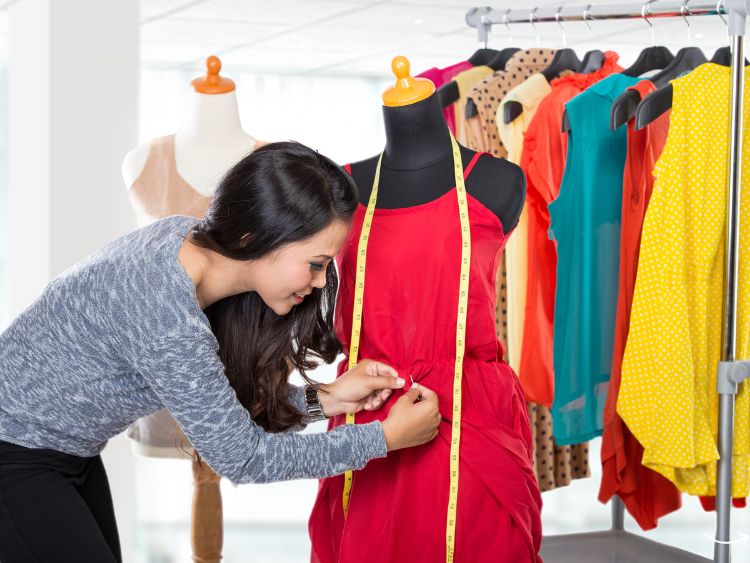Creating the perfect outfit starts with an idea, a vision that embodies your creativity and style. For fashion designers, turning that vision into reality begins with the humble yet powerful clothing template. Fashion design clothing templates serve as the foundation upon which designers can sketch, plan, and refine their creations before fabric ever meets sewing machine. So, let’s delve into this fascinating world of templates and explore how they can help you bring your designs to life!
What Are Fashion Design Clothing Templates?
Fashion design clothing templates, also known as croquis (the French word for sketch), are pre-drawn outlines of the human figure that designers use to sketch their garment ideas. These templates provide a consistent base upon which designers can unleash their creativity without getting bogged down in drawing the figure every time. Here’s why templates are so essential:
- Time-Saving: Start sketching immediately without drawing figures from scratch.
- Consistency: Maintain a consistent body shape across all designs for a cohesive collection.
- Focus on Creativity: Concentrate on the design details rather than perfecting the human form.
Different Types of Clothing Templates
Designers have different needs, and there’s a template for each of them! Here are the main types:
- Flat Templates: Simple, flat sketches that focus solely on the garments without showing a model’s body. Ideal for technical drawings and spec sheets.
- Full-Figure Templates: Feature the entire body, allowing designers to visualize how garments will look on a model. These are perfect for creative sketching.
- Pose Templates: Show models in various poses, adding dynamism to designs and helping designers visualize movement.
- Plus-Size Templates: Represent different body shapes and sizes, ensuring inclusivity in design.
- Kids’ Templates: Specifically tailored for children’s fashion, featuring kid-sized figures.
Creating Your Own Clothing Templates
While pre-made templates are convenient, creating custom templates can make your designs unique. Here’s a step-by-step guide:
Step 1: Choose Your Base
Pick a base image that represents the body type and pose you desire. This could be a photograph, a sketch, or a real-life model.
Step 2: Trace the Outline
Use tracing paper or a digital tool to trace the outline of the body. This outline will be your template.
Step 3: Simplify and Refine
Strip down the template to a simple outline and refine any irregularities to achieve a clean, consistent shape.
Step 4: Add Guidelines
Include basic guidelines for the bust, waist, hips, and knees to ensure proportionate sketching.
Step 5: Save and Reuse
Save your custom template in both digital and physical formats so you can reuse it for future designs.
Using Fashion Design Clothing Templates Effectively
To maximize the potential of your clothing templates, follow these tips:
- Experiment with Layers: Layer tracing paper over your template to explore different design ideas quickly.
- Use Colored Pencils/Markers: Highlight different sections and features to add depth and clarity.
- Try Digital Tools: Software like Adobe Illustrator or Procreate offers digital templates and enhances creativity with various tools.
FAQs About Fashion Design Clothing Templates
Q1: How do I choose the right fashion design clothing template?
A1: Start by identifying the purpose of your design. If you’re focusing on a technical sketch for manufacturing, opt for flat templates. If you’re working on creative designs for a collection, full-figure or pose templates will give you a clearer picture of how garments will drape on a model.
Q2: Where can I find high-quality clothing templates?
A2: Numerous online resources provide free and paid templates. Some popular options include:
- Adobe Stock: Offers a comprehensive collection of templates and illustrations.
- Pinterest: A treasure trove of user-shared templates.
- Etsy: Many independent artists sell customizable templates here.
Q3: Can I modify pre-made templates for my designs?
A3: Absolutely! Pre-made templates are meant to be a starting point. You can modify poses, body shapes, and add guidelines to suit your needs.
Q4: Do clothing templates work for digital design tools?
A4: Yes, many templates come in digital formats compatible with design software like Adobe Illustrator, CorelDRAW, and Procreate. This allows you to edit, resize, and experiment with your designs digitally.
Q5: How do I maintain creativity while using templates?
A5: Templates are just a base. Think of them as a launchpad for your creativity. Experiment with different patterns, fabrics, and styles. Templates give you the structure to focus on refining your creative ideas.
Conclusion
Fashion design clothing templates are an indispensable tool in the fashion world, empowering designers to streamline their creative process, maintain consistency, and bring their unique visions to life efficiently. Whether you’re a budding designer experimenting with your first sketches or a seasoned pro refining your next collection, these templates will save you time and enhance your creativity.
Harness the power of clothing templates and see where your creativity takes you!
